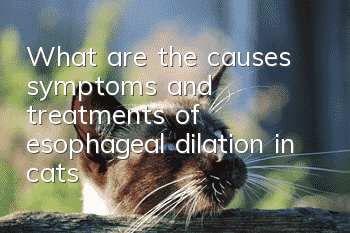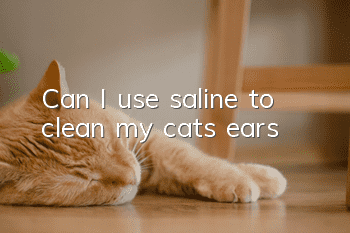What are the causes, symptoms and treatments of esophageal dilation in cats?

Etiology analysis of cat esophageal dilation
Cat esophageal dilation (esophagertasis) mainly causes dysphagia, esophageal reflux and progressive weight loss in cats. Cat's esophageal dilation can be divided into two types: congenital and acquired. So what causes cat esophageal dilation?
Congenital esophageal dilatation is a hereditary disease. Cats such as Siamese cats in Thailand and cats related to Siamese cats have a higher incidence rate. It usually occurs before and after weaning.
Acquired esophageal dilatation can occur in cats of any age and breed, and most of the primary causes are currently unknown. Diseases that affect bones, such as myasthenia gravis, hypothyroidism, and adrenocortical insufficiency, can cause esophageal dilation. In addition, damage to the nerve plexus, trauma, tumors and cardia spasm can also cause this disease.
Clinical symptoms of cat esophageal dilation
The most common cat esophageal dilation is Siamese cats. This disease can be said to be one of the genetic diseases of Siamese cats. Cat's esophageal dilation can also be congenital or acquired. It can be the entire esophagus or a certain section of the esophagus.
The clinical features of esophageal dilatation in cats are dysphagia, esophageal reflux and progressive weight loss. In the initial stage of the disease, reflux occurs after eating. Later, as the disease progresses, esophageal dilation intensifies and food reflux is delayed. It is completely normal for kittens with congenital esophageal dilation to eat milk during lactation. Food reflux occurs only when they mainly eat solid food. Because food is retained in the dilated esophagus and fermented, sick cats often have bad breath and can cause esophagitis or pharyngitis. If the refluxed food is choked into the respiratory tract, it can cause tracheitis and foreign body pneumonia with serious consequences.
Diagnosis, prevention and treatment of esophageal dilation in cats
Since cat esophageal dilatation is a common genetic disease in Siamese cats, parents who raise Siamese cats at home should pay attention. If your cat has unexplained dysphagia or esophageal reflux, you must pay attention. Observe and go to the hospital for a check-up if necessary. The editor will tell you the key points of diagnosis and prevention and treatment measures for cat esophageal dilation.
1. Key points of diagnosis
Based on the symptoms of frequent esophageal reflux, this disease can be suspected. If esophageal dilatation occurs in the cervical esophagus, a thick, hard esophagus and contents can be palpated in the neck. X-ray examination can be used to diagnose esophageal dilation. If barium imaging is used, the extent of expansion and the scope of the disease can be determined.
2. Prevention and Control Measures
1. Treatment measures: Feed the sick cat semi-liquid food, with small amounts and frequent meals. For kittens with congenital esophageal dilation, raising the forequarters during feeding can alleviate the symptoms.The condition disappears naturally. Lifting and feeding should continue until the kitten's swallowing function is normal. The earlier it is discovered and treated, the better the prognosis will be. If the diagnosis and treatment are delayed for 5 to 6 months, the prognosis will be poor.
For acquired esophageal dilatation, the primary cause should be identified and treated. In some severe cases, esophageal myotomy surgery can be tried to raise the head during feeding so that the patient can stand up to eat.
2. Preventive measures: when buying a cat, you should choose a cat with good quality and body condition, pay attention to check the parent line of the cat you want to buy, and try to avoid buying Siamese cats with genetic diseases. At the same time, diseases such as myasthenia gravis, hypothyroidism, and adrenal insufficiency that can induce this disease must be treated promptly.
- There are hard little bumps like scabs on the cat’s head and neck
- What items do novice cat owners need to prepare?
- Can blue cat diarrhea heal on its own?
- The first night of neutering a male cat is a dangerous period
- Train your cat to walk with you and teach you how to walk your cat!
- What causes cats to sneeze?
- Training your cat’s social behavior when it’s young
- What should you do if your cat vomits after eating cat food? There are several reasons!
- What to do if your cat has urethra obstruction
- Why does a cat die after giving birth to its first litter?



